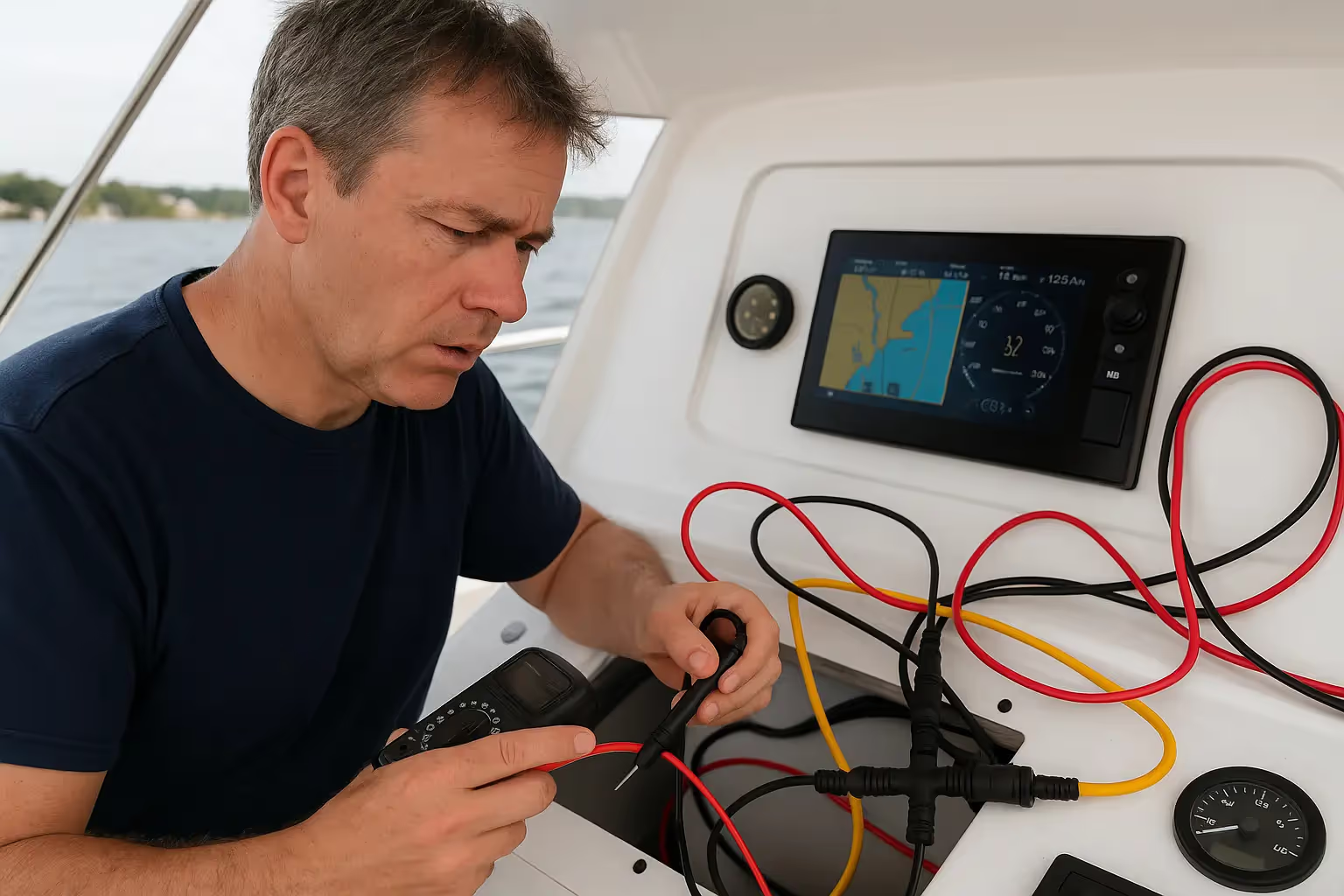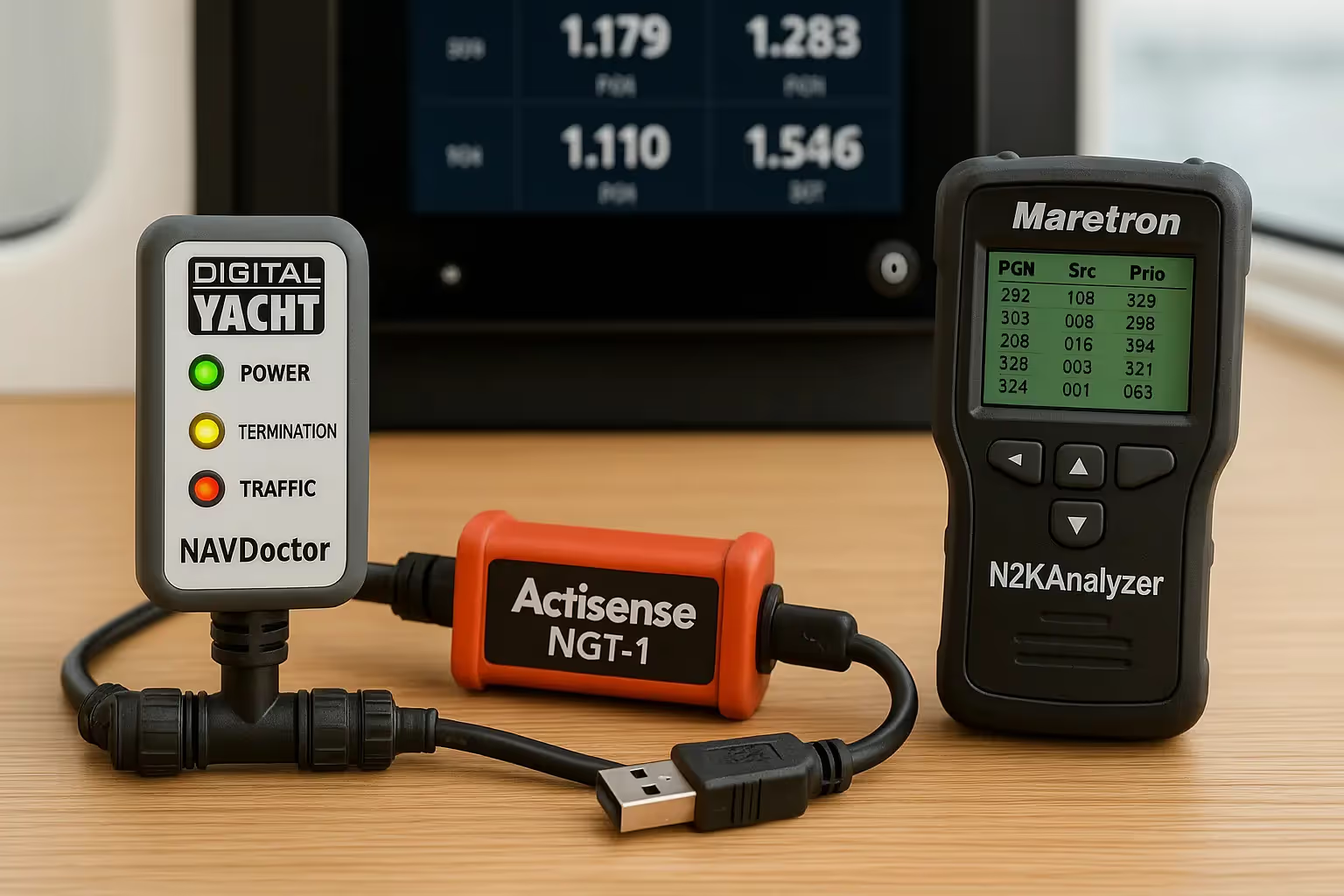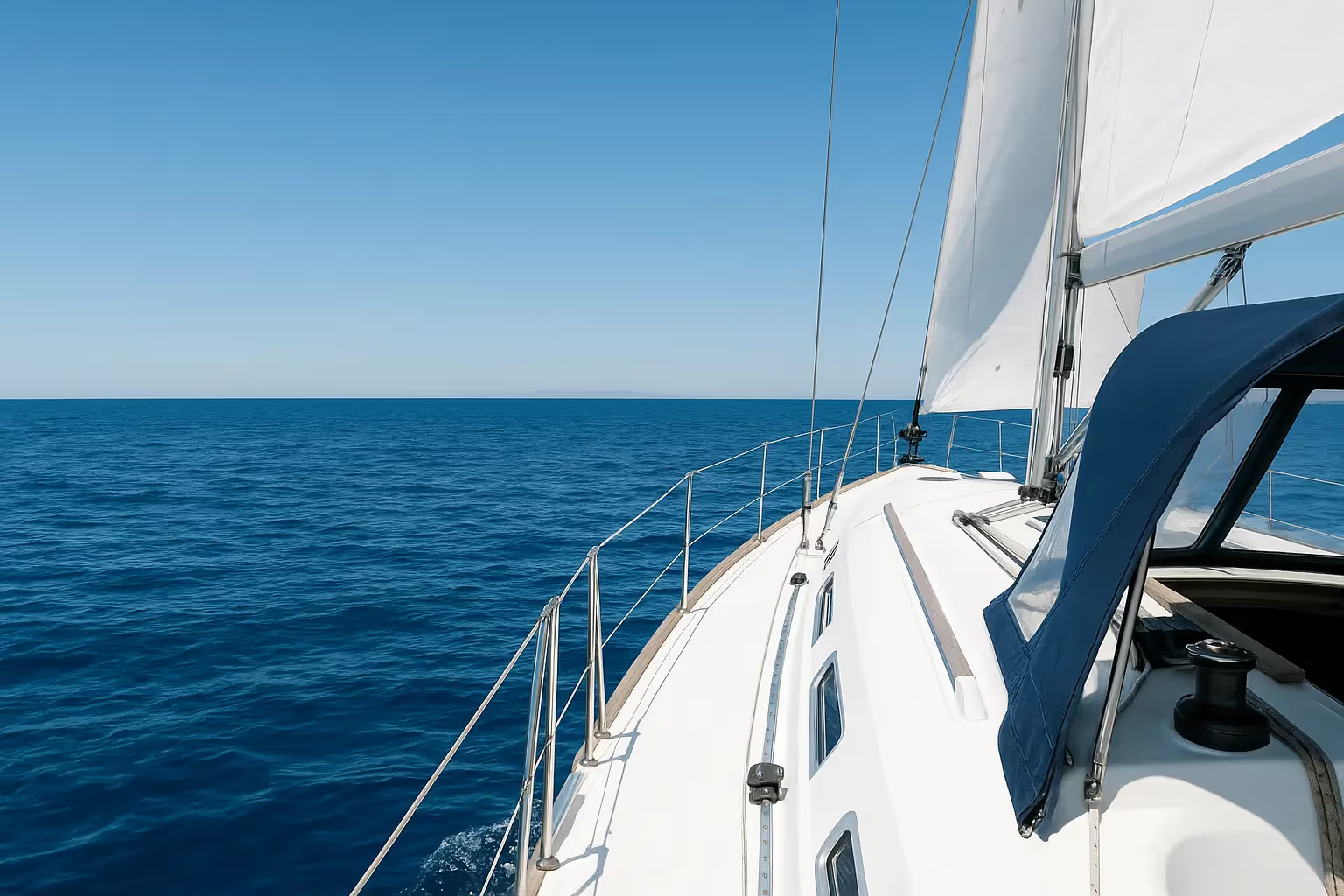Predicting the Winds: A Balearic Weather Guide for Sailors

1. Understanding the Balearic Winds
The Balearic Islands are a renowned nautical destination, yet their winds remain a complicated web of interacting meteorological phenomena. Sailing these waters means dancing with forces that are born from unique geographical and atmospheric conditions. Each wind has its personality, and understanding them is crucial for anyone wanting to explore these seas.
Tramontana or Mistral: The Tramontana, similar to the cold breath of the Pyrenees, is a notorious wind that descends from the north, coursing through the Gulf of Lion and sweeping across the seas with a cold chill. It's recognized for its lower temperature, high intensity, and rapid onset, which often intensifies after crossing the mountains. These characteristics create difficult conditions that require sailors to be skilled and respectful.
Gregal: Coming from the northeast, the Gregal is a wind that typically brings moisture-laden currents. It is especially noticeable in the winter when it is frequently accompanied by lower temperatures and occasionally causes rough seas, making navigation more difficult, especially for inexperienced sailors.
Levante: The Levante is a wind that originates in the east and moves across the Mediterranean to gather precipitation and warmth. It's a wind of opposites, one that can be tenderly caressed or can suddenly transform into a powerful force deserving of respect and cautious handling, especially in the changing seasons.
Garbí, Lebeche, or Llebeig: These winds, coming from the southwest, are from the distant Sahara. They're warm, often humid, and bring an exotic guest: Saharan dust. This phenomenon paints the sky in hues of orange and can reduce visibility at sea, adding an extra layer of challenge to navigation.
Ponent: The Ponent comes from the West, often milder than its counterparts but still capable of growing strong, especially during the autumn and winter months. This wind requires a vigilant eye, as it can change moods very quickly.
Knowing the signals and moods of the Balearic winds is essential to navigating them. With this ability, a sailor becomes an experienced soothsayer, able to predict what these atmospheric forces may reveal next when out at sea.
2. Summer Winds and Their Daytime Intensification
The summer season in the Balearic Islands is characterized by calm skies and clear waters, but it's also a time when sailors see a fascinating daily ritual performed by the winds: a steady strengthening under the sun's protective glare. This phenomenon is particularly noticeable with the south-easterly winds known locally as Siroco, Xaloc, or Jaloque. Though usually gentle in the mornings, these winds tend to become more dramatic during the day, frequently intensifying and gaining strength and speed in what's locally known as the Migjorn or Mediodía.
This daily crescendo, which usually peaks in the afternoons, can present both opportunities and difficulties. The abrupt rise in wind speed can be shocking to those who are unfamiliar with it, transforming a leisurely sail into an unanticipated war with the weather. However, for the experienced and the prepared, this predictable pattern provides a thrilling opportunity to harness the winds' power for an exhilarating sailing experience.
The key to navigating the summer winds' daytime intensification lies in anticipation and understanding. To detect any subtle changes that may indicate an oncoming escalation of the winds, sailors must maintain a close watch on the sky and the water. Being prepared to reef sails, secure loose items on board, and reassessing routes are essential steps as the breezes strengthen. Ultimately, respecting the Mediodía's power while embracing its potential can turn an ordinary summer sail into an exhilarating maritime adventure.
3. Preparing for the Balearic Winds: Tips for Beginners
Sailing the Balearic Islands is a thrilling activity, but it requires careful planning, especially for novices, due to the unpredictable weather in the area. Here's how inexperienced sailors should prepare for potential challenges posed by the Balearic winds:
Educate Yourself: Before setting sail, familiarize yourself with the characteristics and patterns of the local winds. Your first line of defense is knowing what to expect from the Tramontana, Gregal, Levante, and others. Read sailing guides, and weather reports, or converse with seasoned local sailors.
Stay Informed: The weather in the Balearics can change very quickly. Regularly consult detailed weather forecasts from reliable sources, before and during your voyage. Apps and marine radios can also provide you with real-time updates and warnings.
Recognize the Signs: Learn to interpret the sky and sea's language. An unexpectedly choppy sea might indicate a Gregal, while a hazy horizon could herald the arrival of the Garbí with its Saharan dust. Knowing how to observe these signs can give you valuable time to prepare.
Practical Skills: Enroll in practical sailing courses. Our RYA courses, for example, offer beginners the chance to learn essential skills under professional guidance. Hands-on experience is invaluable in understanding and respecting the power of these winds.
Safety First: Make sure your boat has all the safety equipment it needs, such as communication devices, first aid supplies, and life jackets. Learn how to reef quickly and when to reduce sail area to avoid overpowering to be ready for sudden winds.
Plan B: Always have an alternative plan. If the winds become too strong or unpredictable, be prepared to change course or seek shelter. Stubbornness or pushonitis as it is sometimes known, on the sea is a very dangerous trait.
Sailing the Balearic Islands is an enriching experience, blending the joys of exploration with the thrill of facing nature's elements. This is an activity that even a novice can safely embrace with preparation and respect for the winds.
Conclusion
Navigating the Balearic Islands' diverse winds requires knowledge, preparation, and adaptability. Beginners need to prioritize learning the distinct characteristics of winds like the Tramontana, Levante, and Garbí, and always consult reliable weather sources before and during voyages. Practical sailing courses, such as those offered by the RYA, are invaluable for gaining hands-on experience. Always keep in mind that safety comes first. Make sure your gear is in good working order and don't be afraid to change course when the wind picks up. Respecting these principles will provide a fulfilling and safe sailing experience across these captivating Mediterranean waters.
FAQs
How predictable are the Balearic winds?
Some of the winds have regular patterns (like the afternoon intensification of the Mediodía), but it's always best to check daily forecasts, as Mediterranean weather can be extremely unpredictable.
How does the Saharan dust affect sailing?
Dust can reduce visibility and may even lead to respiratory issues for some individuals. It's recommended to have protective eyewear and masks on board during these conditions.
Are there any winds that pose significant threats to beginners?
Winds like the Tramontana can be gusty and unpredictable. Beginners should exercise caution, preferably sailing with an experienced crew or after gaining sufficient training.
How do local sailors adapt to these winds?
Local sailors often use their knowledge of the landscape to predict winds and adjust their sails and routes accordingly. Experience and familiarity with the region play a key role.
Which season is the best for beginners to start sailing in the Balearics?
Spring and early summer tend to be more beginner-friendly, with milder wind patterns. However, always ensure you know what the day's specific weather conditions are.
















